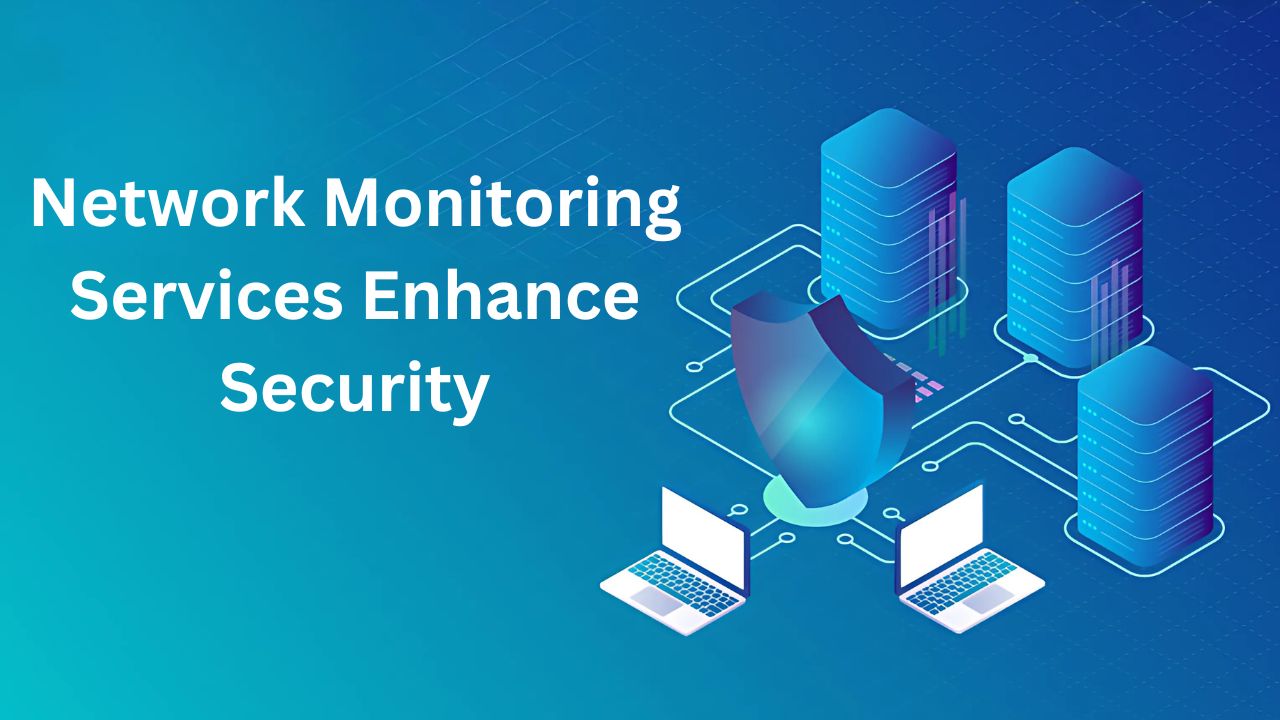
Introduction
Companies in modern times depend on their networks to handle communication alongside data transfer needs alongside their regular business activities. Businesses now consider maintaining secure and stable networks among their highest priorities as cyber threats demonstrate ongoing development. Network monitoring services ensure enhanced security through their continuous surveillance of network activities which detects threats alongside their prevention of cyberattacks. The combination of robust IT support and comprehensive services enables businesses to detect vulnerabilities in advance which enables reduction in system downtime and enhances network operating efficiency.
The exact mechanisms through which network monitoring services strengthen security become evident. The main ways that these services maintain business safety against cyberattacks as well as strengthen network stability include:
1. Real-Time Threat Detection
Real-time threat detection represents among the key advantages network monitoring services provide to enterprises. The constant traffic analysis performed by monitoring tools enables them to identify and detect unusual activities like unauthorized access attempts or abnormal data transfers instantly.
Automation of alerts coupled with immediate notifications allows IT personnel to address security threats before responsible breaches can occur. The anticipatory measures stop cyber-based threats including data breaches as well as ransomware attacks and other digital security breaches.
2. Identifying and Blocking Malicious Activities
The existing weaknesses in corporate networks allow cybercriminals to trespass unauthorized systems containing sensitive information. Through their traffic analysis network monitoring solutions identify abnormal behavior which signals potential malicious events including the following:
-
Distributed Denial-of-Service (DDoS) attacks
-
Unauthorized login attempts
-
Malware infiltration
-
Phishing attempts
Businesses can stop cyber threats and protect their systems from further harm through early detection of these risks so they can implement immediate blocking procedures to protect their network from bad IP addresses while isolating impacted systems.
3. Preventing Data Breaches and Insider Threats
Core security threats can exist beyond external attacks since employee and internal members of a system might represent risks. Both purposeful actions and accidental behavior contribute to such threats. Logical network tracking services monitor how users operate their systems by identifying unexpected system usage including unapproved document access and extensive data conveyance.
Commercial enterprises can limit insider threats and safeguard their confidential data by setting specific authorization rules and observing employee network actions.
4. Ensuring Compliance with Security Regulations
Multiple industries including financial, healthcare along with e-commerce businesses need to fulfill strict data protection rules that include GDPR, HIPAA and PCI DSS. Non-compliance with required rules leads to severe financial penalties along with damage to company reputation.
Network monitoring tools help businesses stay compliant by:
-
Businesses reach compliance targets via the usage of network monitoring tools.
-
Maintaining secure network configurations
-
System logs unauthorized access attempts while documenting all attempts through network monitoring tools.
Organizations depend on detailed audit reports to meet their regulatory criteria.
Through their implementation Network monitoring solutions enable companies to achieve proper network security standards.
5. Reducing Downtime and Improving Network Reliability
Costly system outages occur after cyberattacks and network failures that damage both business productivity as well as customer trust. The identification of performance bottlenecks together with hardware failures and bandwidth overloads becomes possible through network monitoring services which prevents severe network disruptions.
Short-term intervention on identified network problems allows businesses to keep their networks stable and secure and achieve continuous operations.
6. Enhancing Incident Response and Recovery
Despite excellent security arrangements cyber incidents may still happen from time to time. A network under constant surveillance lets IT teams act swiftly to minimize security breach consequences.
Network monitoring solutions provide:
-
Disciplinary incident reports help security teams identify the original causes that led to attacks.
-
The system incorporates automatic response protocols that stop destructive network activities.
-
The backup system helps users recover lost data while allowing them to resume operational tasks
Businesses that accelerate their incident response capabilities diminish security risks and decrease financial damage from security incidents.
7. Strengthening Endpoint Security
The standardization of remote work together with cloud-based operations requires businesses to add protection layers for internal networks and distant devices. Network monitoring services track connected devices through automated systems to validate their security compliance status and confirm they do not compromise system security.
Through endpoint monitoring, businesses can:
-
The network monitoring system identifies all devices which attempt unauthorized network access.
-
Product security remains strong because all employee devices run with their patches updated.
-
The system needs protection against security threats emerging from potential spread
8. Integration with IT Services and Support
Businesses must unite IT services with support functions to network monitoring tools in order to reach security maximums. Security policies management along with threat response functions and software maintenance responsibilities belong to IT teams.
Businesses gain multiple advantages from the joint work of IT support with network monitoring functionality.
-
Stronger network defenses through proactive threat detection
-
Efficient troubleshooting and risk management
-
Suppliers maintain their platforms through ongoing security updates and patch releases for preventing vulnerabilities.
Conclusion
Businesses need to make investments in network monitoring services to improve their security framework and stop cyber threats and retain network operational stability. Network monitoring services actively monitor systems in real-time to detect malicious activities through which they enhance incident response times thus protecting networks from attacks.
A business obtains compliance and minimizes downtime while safeguarding sensitive data when it combines network monitoring with proactive IT services and support & technical assistance. Security threats against networks evolve endlessly therefore businesses need to establish network security as their top priority to preserve operational efficiency and customer trust.